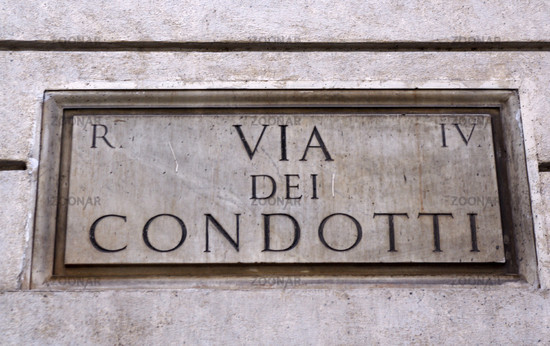I woke up earlier than usual today, 7:10am
to be exact. The Global Scholars were headed to Banca D’Italia, Italy’s central
bank, and the unpredictable nature of Rome’s public transportation was not
going to keep us from getting to the bank on time. Besides, we needed the extra
time in case we got lost and needed to ask for directions. At 8:45am, I met up
with my fellow GloSchos at the Colli Portuense tram stop. Public transportation
decided to be nice to us today and we arrived to Banca D’Italia twenty minutes
before our tour began (GO Global Scholars!).
 At Banca D’Italia we visited The Money
Museum at Palazzo Koch. At the museum, we admired Mesopotamian clay tablets,
various collections of coins made out of precious metals, modern coin
collections and banknotes. Walking from room to room to see the different
collections felt like traveling through time and retracing the steps of the
development of money and the global economy. Most importantly, the museum
taught us the crucial role that money has played in the history of both
independent nations and the international system since ancient times. For
example, I was amazed to learn that at one point, the denarius, a silver coin used in the Roman Empire in 300 B.C.,
served as global currency, and allowed the Roman monetary system to create a
fixed exchange rate between silver and bronze.
At Banca D’Italia we visited The Money
Museum at Palazzo Koch. At the museum, we admired Mesopotamian clay tablets,
various collections of coins made out of precious metals, modern coin
collections and banknotes. Walking from room to room to see the different
collections felt like traveling through time and retracing the steps of the
development of money and the global economy. Most importantly, the museum
taught us the crucial role that money has played in the history of both
independent nations and the international system since ancient times. For
example, I was amazed to learn that at one point, the denarius, a silver coin used in the Roman Empire in 300 B.C.,
served as global currency, and allowed the Roman monetary system to create a
fixed exchange rate between silver and bronze.  After leaving The Money Museum and the
Italian central bank, I decided to leave the numbers, currencies and exchange
rates behind and turn my tourist mode on. Friends and I visited the Piazza di
Spagna, where the famous Spanish Steps are located, and then walked through Via
dei Condotti, a large street with high-end fashion stores and brand names
boutiques. Something that grabbed my attention was the amount of foreigners I
saw. Well obviously I was in the middle of one of Rome’s most famous tourist attractions,
but even as my friends and I walked down Via dei Condotti and window-shopped at
Prada, Salvatore Ferragamo and Gucci, the number of different languages I heard
was astonishing. People from China, Mexico, England, France and many, many more
countries were going in and out of the fancy shops. At this point, I could not
keep the numbers, currencies and exchange rates I had learned at Banca D’Italia
out of my mind, and I started thinking about how there are currencies nowadays
that are just like the Roman denarius.
Currencies such as the U.S. dollar, the Euro and the Japanese Yen are used
around the world and are easily convertible. The tourist and foreigners
shopping at Via dei Condotti must have exchanged their national currencies for
Euros, just like people in 300 B.C. exchanged the Roman denarius for goods or
just like Romans exchanged silver and bronze through the coin.
After leaving The Money Museum and the
Italian central bank, I decided to leave the numbers, currencies and exchange
rates behind and turn my tourist mode on. Friends and I visited the Piazza di
Spagna, where the famous Spanish Steps are located, and then walked through Via
dei Condotti, a large street with high-end fashion stores and brand names
boutiques. Something that grabbed my attention was the amount of foreigners I
saw. Well obviously I was in the middle of one of Rome’s most famous tourist attractions,
but even as my friends and I walked down Via dei Condotti and window-shopped at
Prada, Salvatore Ferragamo and Gucci, the number of different languages I heard
was astonishing. People from China, Mexico, England, France and many, many more
countries were going in and out of the fancy shops. At this point, I could not
keep the numbers, currencies and exchange rates I had learned at Banca D’Italia
out of my mind, and I started thinking about how there are currencies nowadays
that are just like the Roman denarius.
Currencies such as the U.S. dollar, the Euro and the Japanese Yen are used
around the world and are easily convertible. The tourist and foreigners
shopping at Via dei Condotti must have exchanged their national currencies for
Euros, just like people in 300 B.C. exchanged the Roman denarius for goods or
just like Romans exchanged silver and bronze through the coin.
*The images of
The Money Museum and the Roman denarius are taken from the Banca D’Italia
website since we were not allowed to take pictures inside the museum. Visit the
website: http://www.bancaditalia.it/media/fotogallery/museomoneta/museomoneta;internal&action=_setlanguage.action?LANGUAGE=en

No comments:
Post a Comment